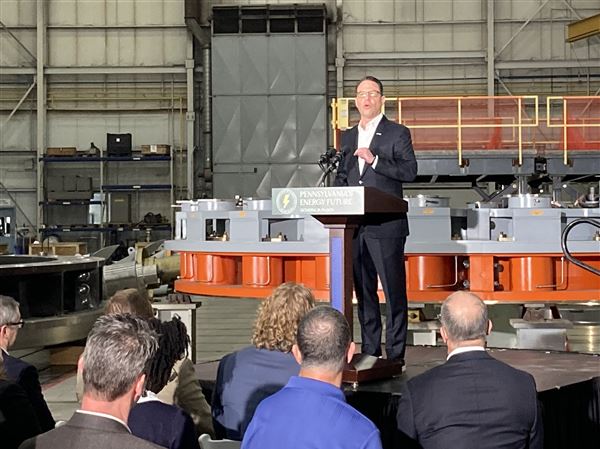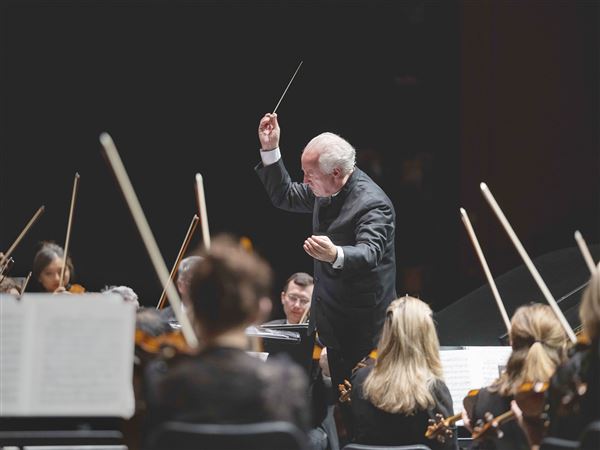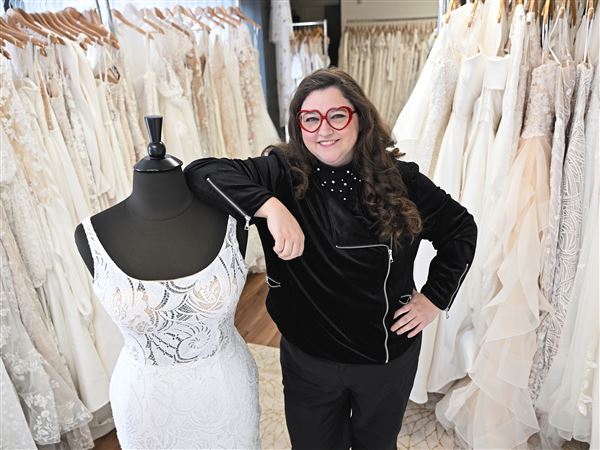
"Alison Lapper Pregnant," a 12-foot-high marble statue of a disabled British artist when she was 8 months pregnant, has been viewed by millions of people during the past year in London's Trafalgar Square.
Click photo for larger image.
LONDON -- Alison Lapper has been sitting naked in Trafalgar Square for just about a year now.
Not Ms. Lapper in person, of course, but in some ways, an even more startling version of herself: a 12-foot-tall, white marble statue that depicts her when she was eight months pregnant, displaying the body she was born with -- no arms and severely shortened legs.
Ms. Lapper, who has a condition called phocomelia, was first sculpted in 1999 by British avant-garde artist Marc Quinn.
When the City of London later launched a competition to put a modern sculpture on an empty pedestal in historic Trafalgar Square, "Alison Lapper Pregnant" was the first work chosen.
The square is best known for its newly reconditioned Nelson's Column, a soaring tribute to Admiral Horatio Nelson, and for the wheeling flocks of pigeons that bedevil tourists and natives alike.
But the Lapper statue made its own impact.
When its purple shroud was pulled off in September 2005, the statue won quick applause from many, and vociferous criticism from others.
The negative reviews took two forms.
One group said that the sculpture didn't fit with the traditional statues already gracing the square. "We need something more profound and historical for Trafalgar Square," sniffed one art magazine editor.
The other group, The Times of London columnist Janice Turner wrote caustically, felt that the square "should only celebrate those who have built our nation. Alison Lapper has never done anything, they say, merely existed, [and] made the best of her unfortunate lot."
Those who have met her, or who have read her autobiography, "Alison Lapper: My Life in My Hands," would likely disagree with that assessment.
Ms. Lapper, a working artist herself, was born in April 1965 in Burton-Upon-Trent in northern England.
The hospital staff didn't tell her mother about her condition for a full day. When she finally found out, she returned home and left Alison at the hospital, giving her up to be raised in an institution.
"So there I was," Ms. Lapper wrote, "Alison Lapper, aged one week. With no arms. And my legs had no knees, just the thigh bone ending in my feet, which weren't quite right either. Nobody knew what caused it, but since I looked similar to the earlier thalidomide cases, most people assumed that's what I was.
"I was considered to be severely disabled. I hate that phrase with a passion, but that was the label that was attached to me for the next 19 years."
While still an infant, she was moved to a home for about 250 disabled children, where she spent the remainder of her childhood. There, she and the other children met some of the most important, nurturing adults of their lives -- but they also encountered regimentation, insensitivity and occasional brutality.
She described one male staffer who, among other things, "would pick us up and throw us across the room. ... He would stand with one of us in his arms at one end of the playroom and then throw us across in an arc to the other side. ... There were some cushions on the far side of the room that he aimed for and we were meant to land on them.

Alison Lapper often does photographic self-portraits, using her body as a modern-day Venus de Milo.
Click photo for larger image.

Alison Lapper with her son Parys, who was born with no disabilities.
Click photo for larger image.
"Sometimes we did, but most of the time his aim missed the cushions altogether. When that would happen we would hit the concrete and lino floor with a crack."
Life at the home wasn't always so cruel, though, and Ms. Lapper particularly enjoyed the periodic trips to the prosthetics workshop.
Despite years of attempts to design workable artificial arms and legs for her, Ms. Lapper eventually found that manipulating objects with her feet and mouth were her best adaptations to the demands of daily life.
Her treatment by the staff at the children's institution improved as she grew older, and by the time she was required to leave at age 17, she found herself sobbing uncontrollably as the van pulled away and she grieved for the only home and friends she had ever known.
After getting training in how to live independently, and experiencing a brief, disastrous marriage that ended in divorce, Ms. Lapper eventually earned an art degree at Brighton University.
Along the way, she linked up with the Mouth and Foot Painters Association, using her skills at painting with a brush held in her mouth to create illustrations for greeting cards, posters and other products sold by the association. It remains her main source of income.
But greeting card art is not where her heart lies. At her Web site, www.alisonlapper.com, she displays photo illustrations that feature her own body.
Using her face and torso as the subject of her art grew out of a comment one of her teachers made.
"I was painting these beautiful bodies, and one of the tutors challenged me and said 'Do you paint beautiful bodies because you feel ugly?' "
Looking through an art book, she then saw the Venus de Milo sculpture in a new light.
"I never ever heard anybody say the Venus de Milo is disabled, and yet if you look at my shoulders and at hers we're very much the same," she said in a recent interview. "Why is it we can look at a sculpture that people think is beautiful, but nobody ever looks at disability in the same light?"
Although she is proud of her nude self-portraits and has received compliments about them at exhibits, she has sold almost none of them.
"I can't seem to break through this impenetrable barrier ... people want to look at my art and see it, but they don't want to go that next step and own it and put it in their homes. I don't know why, exactly. It may make people feel guilty."
She wishes instead that all people would accept each others' bodies.
"I meet a lot of people who don't like this or that about their bodies, particularly women, and I think it's so sad." Being disabled, Ms. Lapper said, "is a huge weight off my shoulders, because I don't have to conform to any particular image."
Dame Jane Campbell, one of the United Kingdom's disability rights commissioners, said Ms. Lapper's willingness to be sculpted nude and eight months pregnant was important for another reason.
"It really goes to the heart of a big taboo many people have, which is that disabled people aren't supposed to have a sexual life, so I think her statue is a really good challenge to that taboo."
Neither Dame Campbell nor Ms. Lapper can say that the statue has greatly changed day-to-day life for disabled people, but Dame Campbell said its symbolic value has been very important.
"It's been brilliant in the way it has changed the usual assumptions about what disabled people can do," she said. "It really endorses this idea that they have the right to have families and jobs and be independent."
When Marc Quinn called Ms. Lapper in January 1999 to ask her to pose for a sculpture, she was leery of his motives. Once she was satisfied that "he wasn't interested in a perverted way," she consented.
When she became pregnant three months later, though, "I thought, he's not going to want to do this now -- but he loved it, because it was very striking."
On the day she posed for her body cast late that year, it was both boring and "excruciatingly painful" because she had to hold her pose for more than 14 hours while being slathered in Vaseline and then waiting for wet plaster strips to dry around her body and face.
Mr. Quinn first made a life-sized sculpture of Ms. Lapper, supersizing it only after winning the Trafalgar Square competition three years later.
At the time she modeled for the statue, "I never imagined that it would ever be made into a sculpture of white marble and placed somewhere like Trafalgar Square," she said.
She also had never imagined she would become a mother.
She had miscarried four times in her 20s, she wrote. Then, when her latest pregnancy lasted, her boyfriend became furious and pressed her to get an abortion. Instead, she broke up with him and carried her child to term.
Her family thought she was crazy, she said, but her doctors encouraged her.
"I had already thought long and hard about the possibility that my baby would be limb-deficient like myself," she wrote, "but [my gynecologist] had told me that the chances of that happening would be as low as 5 percent. In any case, I'd come to the conclusion that if the baby was impaired in any way, there was no one better in the world to understand its needs and look after it."
As it turned out, her baby boy, Parys, had no physical disabilities -- which is not to say that raising him is easy.
Even as she learned to breast-feed him and change his diapers with her feet, she needed the help of social services aides for other tasks.
Today, she has two full-time aides, who rotate week by week, and since her son is now entering school, her need for help is actually greater than his.
After years of trying to stand and walk as much as she could, the 41-year-old finds herself using her wheelchair most of the time. Her shortened legs, which have no knees, cannot ease the shock of walking, and she has developed arthritis in her lower spine.
Parys will often sit in her lap, and is just now old enough to be aware of people staring at them.
"He asks why, and I say 'Because you're beautiful, and Mommy's different.' "
Parys and his mother are also one of 22 families featured in an ongoing BBC documentary project called "Child of Our Time," which is following 25 children born in 2000.
Alison Lapper is traveling to New York this week to attend the annual ceremony of the Women's World Awards, one of which she won last year.
Both she and Dame Campbell are hopeful about the future for disabled people.
While the United Kingdom lagged behind the United States in legal protections for disabled people for many years, it is catching up fast, Dame Campbell said. About half of all public buildings in the U.K. are now handicapped-accessible, and government social services pays for the cost of aides for those who need them and for most of the expense of specially adapted vehicles.
And Alison Lapper, ready to speak to groups at the drop of a hat, feels her message is finally getting through.
"People will come up to me and say, 'What's it like not to be normal?'
"I say, 'What's that? I've never met a normal person. Normal doesn't exist.' "

















